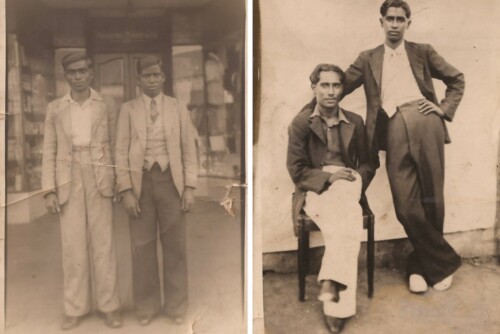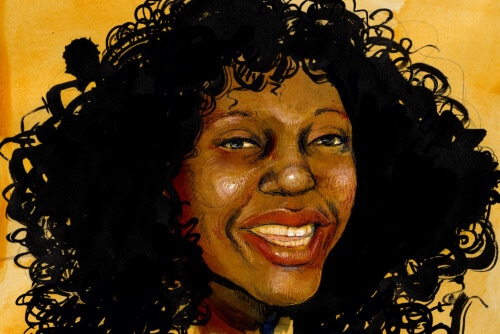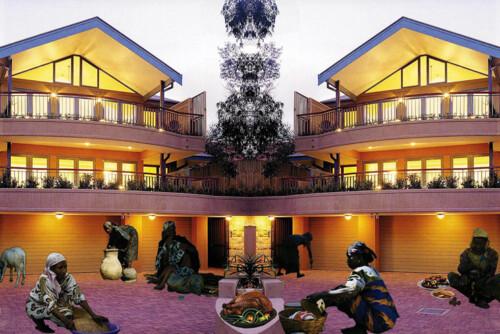Indeed, the US state learned from its encounters with the crest of radical and revolutionary liberationist movements of the 1960s and early 70s that endless, spectacular exercises of military and police repression against activists of color on the domestic front could potentially provoke broader local and global support for such struggles–it was in part because they were so dramatically subjected to violent and racist US state repression that Black, Native American, Puerto Rican, and other domestic liberationists were seen by significant sectors of the US and international public as legitimate freedom fighters, whose survival of the racist state pivoted on the mobilization of a global political solidarity. On the other hand, the US state has found in its coalition with the NPIC a far less spectacular, generally demilitarized, and still highly effective apparatus of political discipline and repression that (to this point) has not provoked a significant critical mass of opposition or political outrage.
Central to this sublimated state discipline and surveillance are the myriad regulatory mechanisms that serve to both accredit and disqualify non-profit social change groups. The Internal Revenue Service, tax laws of individual states, the US Postal Service, and independent auditors help keep bureaucratic order within–and the political lid on–what many theorists refer to as the post-1960s emergence of “new social movements.” McCarthy, Britt, and Wolfson conclude that this historical development has rather sweeping consequences for the entirety of civil society:
Another consequence of the growth of this system is a blurring of the boundaries between the state and society, between the civil and the political. Our analysis suggests that a decreasing proportion of local groups remain unpenetrated by the laws and regulations of the central state…. Some analysts see civil space declining as the result of a fusion of the private and political by the activists of the “new” social movements who politicize more and more civil structures in the pursuit of more comprehensive moral and political goals. Our analysis views the construction as more the consequence of state penetration of the civil, and the consequences in more traditional terms–a narrowing and taming of the potential for broad dissent.19
The NPIC thus serves as the medium through which the state continues to exert a fundamental dominance over the political intercourse of the US Left, as well as US civil society more generally. Even and especially as organizations linked to the NPIC assert their relative autonomy from, and independence of, state influence, they remain fundamentally tethered to the state through extended structures of financial and political accountability. Jennifer Wolch’s notion of a “shadow state” crystallizes this symbiosis between the state and social change organizations, gesturing toward a broader conception of the state’s disciplinary power and surveillance capacities. According to Wolch, the structural and political interaction between the state and the non-profit industrial complex manifests as more than a relation of patronage, ideological repression, or institutional subordination. In excess of the expected organizational deference to state rules and regulations, social change groups are constituted by the operational paradigms of conventional state institutions, generating a reflection of state power in the same organizations that originally emerged to resist the very same state.
In the United States, voluntary groups have gained resources and political clout by becoming a shadow state apparatus, but are increasingly subject to state-imposed regulation of their behavior…. To the extent that the shadow state is emerging in particular places, there are implications for how voluntary organizations operate. The increasing importance of state funding for many voluntary organizations has been accompanied by deepening penetration by the state into voluntary group organization, management, and goals. We argue that the transformation of the voluntary sector into a shadow state apparatus could ultimately shackle its potential to create progressive social change.20
The NPIC as Political “Epistemology”: The Cooptation of Political Imagination
More insidious than the raw structural constraints exerted by the foundation/state/non-profit nexus is the way in which this new industry grounds an epistemology–literally, a way of knowing social change and resistance praxis–that is difficult to escape or rupture. To revisit Abu-Jamal’s conception of the US “cavern of fear,” the non-profit industrial complex has facilitated a bureaucratized management of fear that mitigates against the radical break with owning-class capital (read: foundation support) and hegemonic common sense (read: law and order) that might otherwise be posited as the necessary precondition for generating counter-hegemonic struggles. The racial and white supremacist fears of American civil society, in other words, tend to be respected and institutionally assimilated by a Left that fundamentally operates through the bureaucratic structure of the NPIC. As the distance between state authority and civil society collapses, the civic spaces for resistance and radical political experimentation disappear and disperse into places unheard, unseen, and untouched by the presumed audiences of the non-profit industry: arguably, the most vibrant sites of radical and proto-radical activity and organizing against racist US state violence and white supremacist civil society are condensing among populations that the NPIC cannot easily or fully incorporate. Organized, under-organized, and ad hoc movements of imprisoned, homeless, and undocumented people, as well as activists committed to working beneath and relatively autonomous of the NPIC’s political apparatus, may well embody the beginnings of an alternative US-based praxis that displaces the NPIC’s apparent domination of political discourse and possibility. Such a revitalization of radical political vision is both urgent and necessary in the current moment, especially when the US state’s constant global displays of violence and impunity seem to imply that authentically radical challenges to its realms of domination are all but doomed.
Even a brief historical assessment of the social movement history reveals the devastating impact of state violence on the political imagination and organizing practices of progressive and radical political workers in the United States. Noam Chomsky, for example, argues that the watershed year of 1968 signified a turn in the institutional and discursive trajectory of state violence and repression, departing from the spectacular, peculiar imagery of more traditionally brutal repressive techniques. Framing the state’s partial movement away from technologies of violent public spectacle (assassinations, militarized police raids and “riot control,” and so forth) to a more complex, surreptitious, multidimensional apparatus of coercion, Chomsky’s elaboration of a new “culture of terrorism” echoes Abu-Jamal’s “cavern of fear.” While Chomsky’s critique focuses on an analysis of the Iran-contra scandal in the mid-1980s, one also finds resonance with the state’s attempts to preemptively contain and liquidate political disorder through the white supremacist criminalization and mass-based incarceration fostered by the Reagan administration’s simultaneous initiation of a “War on Drugs.” As the prison and policing apparatuses began to flower at the pinnacle of the Reagan-Bush bloc, so the culture of terrorism provided a context for their reproduction and expansion:
As the Vietnam war escalated through the stages of subversion, state terrorism, and outright US aggression, disaffection and protest among the public became a significant force, preventing the government from declaring the national mobilization that would have been required to win what was becoming a major war…. The general dissidence, particularly among the youth, was perceived in elite circles as a serious problem by itself in 1968, while within the Pentagon, there was concern that sufficient military force be held in reserve to control domestic disorder if the US aggression visibly increased. The key phrase is “visibly”; it was fear of the public that led to the expansion of clandestine operations in those years, on the usual principle that in our form of democracy, if the public escapes from passivity, it must be deceived–for its own good.21
The key terms here are clandestinity and deception: the lessons of 1968 demonstrated that state and owning-class elites needed to maintain a delicate balance between two parallel, interdependent projects. On the one hand, repressive state violence had to be sustained under shrouds of secrecy to prevent the potential coagulation and crisis of a domestic dissent bloc. On the other hand, the state also acknowledged that within the discursive structure of a bourgeois liberal democracy, people had to be convinced that a “free” way of life pivoted on the state’s ability to violently enforce it: that is, the state required a pedagogy of “common sense” that could effectively “teach” people to consent to its profoundly expansive and historically unprecedented methodologies of domestic and global warfare/ militarization. The subtle change in the production of a hegemonic state–its absorption of social change movements and simultaneous construction of new strategies for the production of a popular consent–now manifests deeply and widely in the terrains of civil society. Civil institutions that once housed what Aldon Morris calls the “indigenous centers” of social movement and resistance organizing (e.g., schools, churches, families, friendship networks)22 are now far more likely to exhibit the penetration of the state through a popular epistemology that considers the violent policing of order to be a necessary condition of social life generally.
The rearticulation of state coercion into the massive institutional and discursive formation of the post-Goldwater “law and order” society goes hand in hand with the slow, steady, and voluntary entry of establishment Left organizations into a dependent relation (albeit uneasy and at times conflicted) with the neoliberal state and philanthropic foundations. This is not to suggest that a “pure” autonomy from state authority and discipline is attainable, but rather to argue that resistance and counter-hegemonic organizations dismantle the possibility of radical antagonism as they move into closer proximity to–and dependence on–the centers of state power and (philanthropic) capital. Wolch suggests several critical dimensions to this “dynamic of reduced autonomy”:
- The state will force voluntary groups to plan reactively, in response to new state policies and practices. This is in contrast to enabling groups to plan proactively, to decide on their own goals and objectives, and how to achieve them.
- Contracts and grants will increasingly come with requirements for stringent, rigid, and quantitatively oriented approaches to planning, evaluation, and monitoring.
- Those organizations unable to meet the expanding demands for planning will become increasingly marginalized and may not be able to secure state funding. Such standards for organizational practice will have structural effects, controlling the rise of antiestablishment social movements and pushing marginal groups to produce direct services instead of advocacy outputs.
- Newly formed groups may be jeopardized by new government funding programs.
- There may be little room for voluntary sector development and new initiatives. As more statutory agencies seek to use voluntary groups to provide basic community services, the ability of the voluntary sector to develop innovative approaches to social problems may be severely inhibited. Group activities may become aligned to funding agency needs and expectations for types of services to be delivered. In the process, the type of group output is likely to change toward direct services administered by professionals and away from advocacy and participation.23
Under current circumstances, organized dissent movements and organizations in the United States are often compelled to replicate the bureaucratic structures of the small business, large corporation, and state–creating centralized national offices, gathering political (and, at times, Hollywood) celebrities and luminaries onto boards of directors, and hiring “professional activists” whose salaries depend largely on the effectiveness of professional grant writers. It is worth repeating the tacit though no less far-reaching political implication of this historical development, insofar as social change campaigns, organizations, and aspiring movements increasingly articulate their reason for existence through the imperatives of obtaining the financial support and civil sanction of liberal philanthropy and the state. While it is beyond my intent to adequately address the multiple pragmatic and theoretical problems accompanying this political development, it is worth asking several interrelated questions that reflect on our current condition as activists, scholars, writers, and intellectuals who are enmeshed in the disciplinary restrictions imposed by the NPIC: What are the inherent limits to the vistas of “social change” or transformation mandated by the US Left’s incorporation into the NPIC and its emphasis on career/organizational security? Should the NPIC itself be conceptualized as a fundamental target of radical social transformation (whether it is to be seized, abolished, or some combination of both)? Can people struggling for survival, radical transformation, and liberation (including and beyond those who identify themselves as “activists”) outside the tentacles of the NPIC generate new grassroots, community-based, or even “underground” structures and institutions capable of sustaining movements against the US racist state and white supremacist civil society?
- Ibid. [↩]
- Jennifer R. Wolch, The Shadow State: Government and Voluntary Sector in Transition (New York: The Foundation Center, 1990), 15. [↩]
- Noam Chomsky, The Culture of Terrorism (Boston: South End Press, 1988), 6. [↩]
- See Aldon Morris, The Origins of the Civil Rights Movement: Black Communities Organizing for Change (New York: Free Press, 1986). [↩]
- Wolch, The Shadow State, 206-207. [↩]




